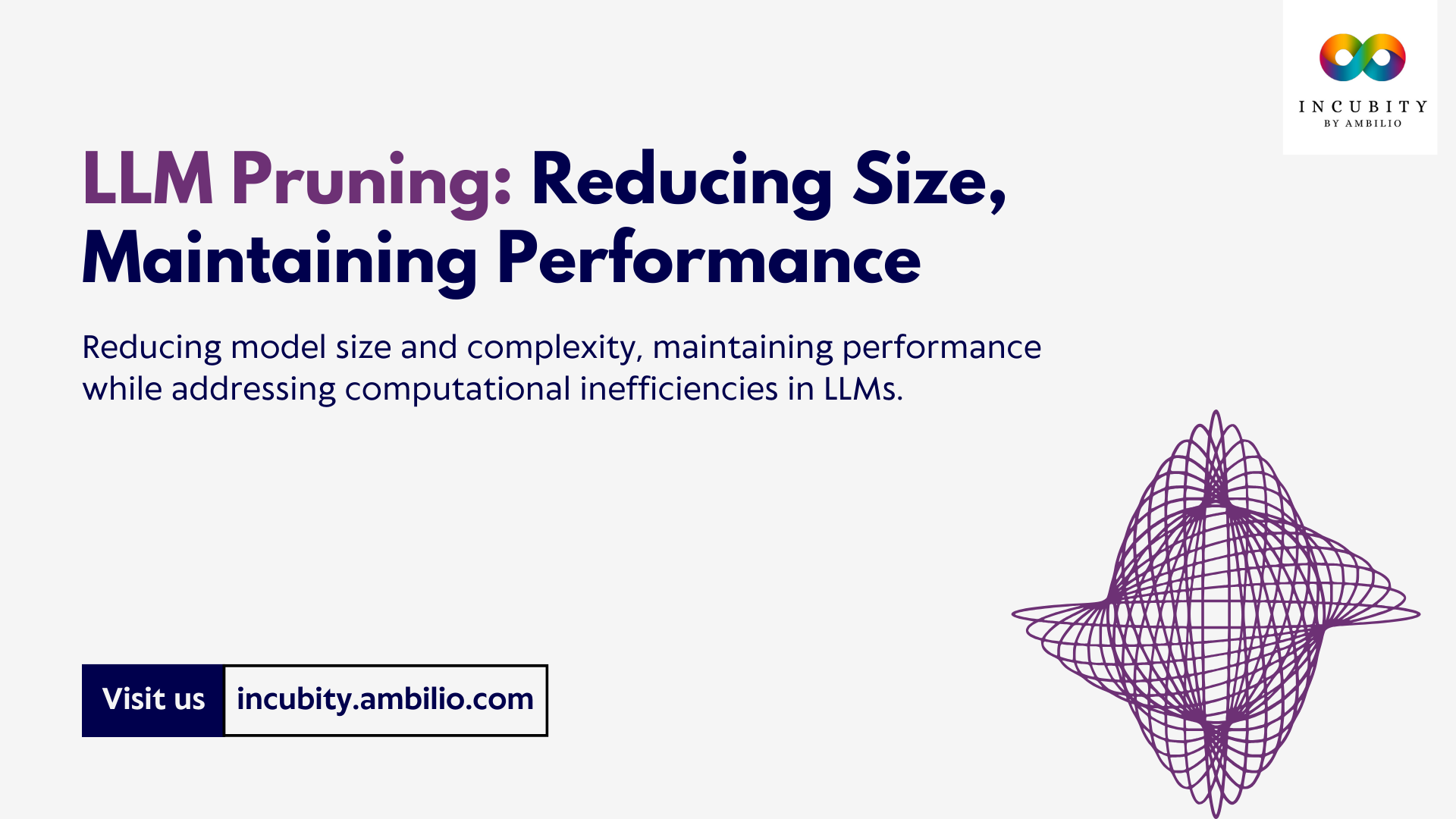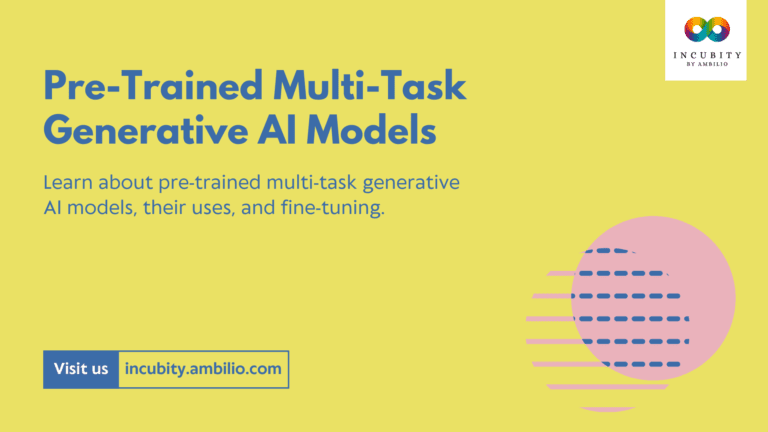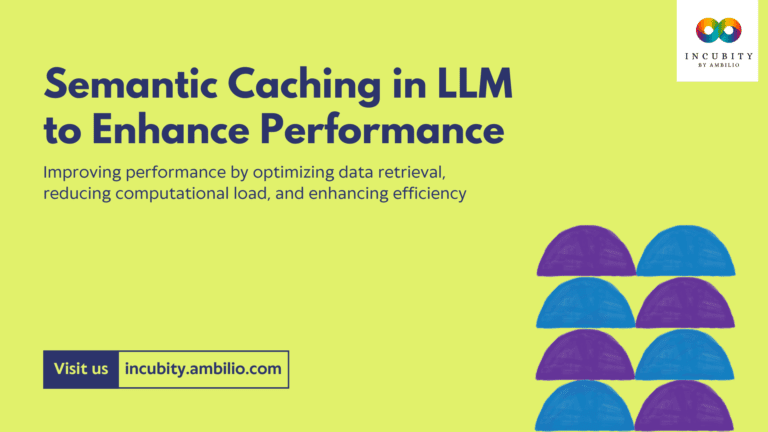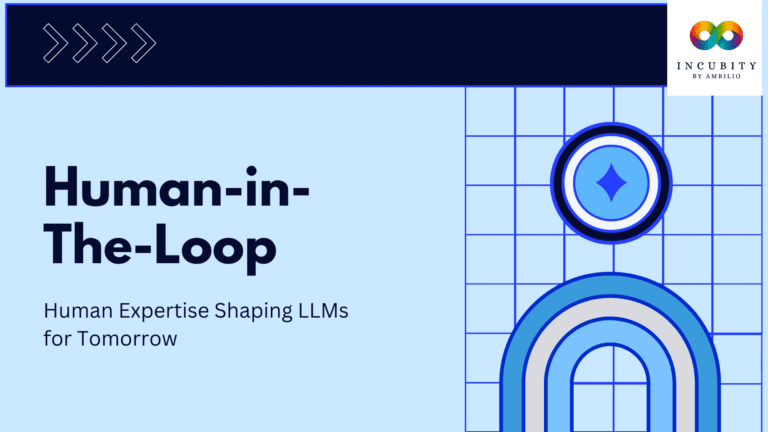Large Language Models (LLMs) have transformed natural language processing, enabling tasks like text generation, translation, and summarization. However, their growing size has led to increased computational demands, making them expensive to train and deploy. Many model components contribute minimally to performance, leading to inefficiencies. LLM pruning addresses this by selectively removing less important parts of the model, reducing its size and complexity while maintaining performance. This article discusses the types of pruning, the process involved, and the challenges associated with optimizing LLMs through pruning.
The Need for LLM Pruning
LLMs like GPT-4, LLaMA, and others have billions, or even trillions, of parameters. While these models provide remarkable performance on a wide range of tasks, their large size poses several practical challenges:
- High computational cost: Training, fine-tuning, and even inference with such models require powerful hardware resources like GPUs and TPUs. This restricts their use to organizations with significant resources.
- Latency: Larger models take longer to generate responses, which can be an issue for real-time applications like chatbots, translation tools, or customer support systems.
- Energy consumption: The vast amount of computational power needed also leads to high energy consumption, making it less environmentally sustainable.
- Deployment limitations: In resource-constrained environments such as mobile devices or edge computing, deploying large models becomes infeasible.
Pruning helps address these challenges by reducing the size and resource demands of LLMs without a substantial drop in their performance.
Types of LLM Pruning
There are two main types of pruning: structured and unstructured pruning. Both approaches aim to reduce model complexity but operate at different levels.
1. Structured Pruning
Structured pruning removes entire components of the model, such as neurons, layers, or attention heads, based on their contribution to the model’s performance. This method ensures that the model remains well-organized and can be more easily optimized for hardware, making it more practical for deployment in systems where performance speed is crucial.
Key Features of Structured Pruning:
- Neurons or channels: In neural networks, neurons that contribute the least to the output can be pruned away. This is often done by analyzing the activations of neurons during training. If a neuron consistently contributes little to the final output, it can be removed.
- Attention heads: In transformer-based models, attention heads are responsible for processing different aspects of input data. Not all attention heads are equally important for a task, so pruning the less significant ones can lead to a more efficient model.
- Layer pruning: In some cases, entire layers of the network can be pruned if they do not add substantial value to the model’s performance.
Structured pruning is generally task-specific, meaning the components that are pruned depend on the task the model is being used for.
2. Unstructured Pruning
Unstructured pruning focuses on removing individual weights (the connections between neurons) within the model. Unlike structured pruning, it does not remove entire neurons or attention heads but rather eliminates specific weights that contribute little to the model’s function.
Key Features of Unstructured Pruning:
- Fine-grained pruning: This method operates at a granular level, selecting individual weights based on their magnitudes. Weights with small values can be removed because they have a negligible impact on the model’s predictions.
- Flexible but complex: While unstructured pruning can achieve high levels of sparsity, it often leads to irregular patterns that are harder to optimize on standard hardware. This can limit the speedup gained during inference.
Unstructured pruning is more flexible than structured pruning but can be more difficult to implement in a way that leads to significant performance improvements on real-world hardware.
The LLM Pruning Process
The process of pruning an LLM typically involves three key stages: importance evaluation, pruning execution, and recovery through fine-tuning. Each step plays a critical role in ensuring that the pruned model remains efficient and functional.
1. Importance Evaluation
Before pruning can begin, it’s essential to evaluate which components of the model are the most and least important. There are various methods to do this:
- Weight Magnitude: One of the simplest ways to assess importance is by looking at the magnitude of weights. Smaller weights contribute less to the final output, so these can often be pruned with minimal impact.
- Gradient Information: Another method involves analyzing the gradients of weights during training. Weights with smaller gradients are typically less critical and can be pruned.
- Activation-based: In some cases, neurons or channels that consistently show low activations across different inputs are identified as less important.
For structured pruning, this evaluation is applied to groups of neurons or attention heads, while for unstructured pruning, it is applied to individual weights.
2. Pruning Execution
Once the importance of components has been assessed, the actual pruning process can begin. This step involves removing the less important components identified in the previous step.
- Global vs. Local Pruning: Pruning can be done either globally, where the entire model is pruned based on overall importance, or locally, where each layer is pruned independently. Local pruning tends to yield better results, as it ensures that each layer retains enough parameters to function properly.
- Pruning ratio: Deciding how aggressively to prune is another critical factor. If too many components are removed, the model’s performance may degrade. Typically, small pruning ratios are used initially, followed by more aggressive pruning as confidence grows in the pruning process.
3. Recovery and Fine-tuning
After pruning, the model may lose some of its accuracy or generalization ability, especially if important components were pruned. To recover this lost performance, the model usually undergoes fine-tuning.
- Low-Rank Adaptation (LoRA): A technique that modifies only a small number of parameters post-pruning. This is highly efficient and allows the model to recover performance without needing a complete retraining.
- Retraining: In some cases, retraining the model on a specific task may be necessary to regain the performance lost during pruning.
Challenges and Considerations
While LLM pruning offers numerous advantages in terms of efficiency, several challenges and considerations arise during its implementation:
1. Performance Trade-offs
The biggest challenge in pruning is balancing the reduction in model size with maintaining its performance. Pruning too aggressively can lead to a significant drop in accuracy, particularly in complex tasks that require many model parameters to perform well.
2. Retraining Complexity
Although methods like LoRA help reduce the need for full retraining, fine-tuning is often still necessary. For large models, retraining can be computationally expensive and time-consuming, somewhat offsetting the gains made through pruning.
3. Task-Agnostic vs. Task-Specific Pruning
Task-agnostic pruning focuses on maintaining the model’s general ability across a wide range of tasks. In contrast, task-specific pruning optimizes the model for a particular task. The latter is more efficient for specialized applications but limits the model’s flexibility.
Final Words
LLM pruning is a powerful technique for optimizing large language models, making them more efficient and accessible for practical deployment. By carefully evaluating and removing less important components, it is possible to reduce the computational and memory requirements of LLMs while preserving much of their performance. While there are challenges, such as balancing size reduction with accuracy and the need for fine-tuning, pruning remains a crucial strategy in making advanced language models scalable for real-world applications. As research in this area continues, more sophisticated pruning techniques will likely emerge, further enhancing the ability to deploy large-scale models in resource-constrained environments.







